- The Architectural Marvel of Sagrada Familia: A Barcelona Icon
- Exploring the History and Significance of Sagrada Familia
- Sagrada Familia: Gaudí's Masterpiece and Its Cultural Impact
- Visiting Sagrada Familia: Tips for Tourists in Barcelona
- The Symbolism Behind Sagrada Familia's Unique Design
- Sagrada Familia: A Testament to Barcelona's Artistic Heritage
The Sagrada Familia, designed by the visionary architect Antoni Gaudí, stands as an iconic representation of Barcelona's rich cultural heritage. With its intricate facades and towering spires, this basilica captivates millions of visitors each year, making it a must-see destination in the heart of the city.
Often referred to as Sagrada Familia: A Symbol of Barcelona's Vibrant Center, this architectural masterpiece embodies the spirit of innovation and creativity that defines the Catalan capital. Its ongoing construction reflects the city's commitment to preserving Gaudí's legacy while embracing modernity, making it a beacon of artistic expression.
The Architectural Marvel of Sagrada Familia: A Barcelona Icon
The Sagrada Familia is not just a church; it is a breathtaking architectural marvel that seamlessly blends Gothic and Art Nouveau styles. Its design features an astonishing array of symbolism, reflecting themes of nature, religion, and Catalan identity. The basilica’s unique structure and intricate details invite visitors to explore its many layers, making every visit a discovery.
One of the most striking aspects of the Sagrada Familia is its towering spires, which are a testament to Gaudí's innovative vision. Each of the 18 spires represents significant figures from Christianity, including the Virgin Mary and the Apostles. This profound symbolism serves not only as an artistic expression but also as a spiritual journey for those who ascend to the heights of this monumental building.
In addition to its aesthetic appeal, the Sagrada Familia is also a beacon of community engagement. The ongoing construction project relies heavily on donations and visitor tickets, highlighting the collective effort to bring Gaudí's dream to fruition. As a result, the basilica remains a dynamic part of Barcelona, evolving alongside its vibrant culture.
- Unique Features: Intricate facades, towering spires, and colorful stained glass windows.
- Construction Timeline: Began in 1882, with an anticipated completion date of 2026.
- World Heritage Status: Designated by UNESCO for its architectural significance.
Exploring the History and Significance of Sagrada Familia
The history of the Sagrada Familia is as intricate as its design, beginning with the foundation stone laid in 1882. Initially conceived by architect Francisco de Paula del Villar, the project took a transformative turn when Antoni Gaudí took over in 1883. His visionary approach brought a unique blend of Gothic and Art Nouveau styles, infusing the basilica with a distinctive character that continues to draw admiration worldwide.
Significantly, the Sagrada Familia is not merely a construction project but a symbol of faith for many. Gaudí envisioned the basilica as a catechism in stone, where every detail serves a purpose. From the majestic Nativity facade, which celebrates Christ's birth, to the Passion facade, which reflects his crucifixion, each section tells a profound story that deepens the visitor's understanding of Christian teachings.
The basilica's significance extends beyond its religious connotations; it is a testament to Barcelona's cultural evolution. Over the decades, the ongoing construction has sparked community involvement and international interest, making it a focal point of the city’s identity. Each brick laid symbolizes not just Gaudí's legacy but also the collaborative spirit of countless artisans and volunteers dedicated to realizing this monumental dream.
As the completion date approaches, expected in 2026, the Sagrada Familia continues to embody the heart and soul of Barcelona. Its presence in the city serves as a reminder of the power of artistic vision and the enduring quest for beauty that resonates with both locals and millions of visitors. The basilica stands as a living monument, evolving with each passing year while remaining deeply rooted in its historical and cultural significance.
Sagrada Familia: Gaudí's Masterpiece and Its Cultural Impact
Gaudí's Sagrada Familia is a testament to the intersection of art and spirituality, where every element is imbued with deep meaning. The basilica is a reflection of the architect's profound connection to nature, as seen in its organic shapes and forms that mimic the natural world. This dedication to nature not only enhances its aesthetic but also promotes a sense of harmony between the built environment and the earth.
As a cultural landmark, the Sagrada Familia has significantly impacted Barcelona's identity. Its construction has fostered a sense of community, drawing tourists and locals alike to engage with the project. This has resulted in a vibrant atmosphere around the site, where people can appreciate the ongoing transformation and the enduring legacy of Gaudí's vision. Key aspects of this cultural impact include:
- Tourism Growth: Attracts millions of visitors annually, boosting local businesses.
- Artistic Inspiration: Influences artists and architects worldwide through its innovative design.
- Community Involvement: Encourages participation in cultural and artistic events surrounding the basilica.
The Sagrada Familia also serves as a symbol of resilience and dedication. Despite the lengthy construction period, which has spanned over a century, the basilica continues to evolve, showcasing the commitment of generations to realize Gaudí's vision. Each stone laid represents not just architectural progress but also the unwavering spirit of those who believe in the importance of culture and heritage.
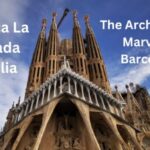 The Architectural Marvel: Sagrada Familia in Barcelona
The Architectural Marvel: Sagrada Familia in BarcelonaUltimately, Gaudí's masterpiece stands as a bridge between the past and the future, representing both a religious symbol and a cultural beacon. Its artistic and spiritual significance resonates deeply within the Barcelona community, reinforcing the idea that architecture is not merely functional but a vessel for storytelling and collective identity.
Visiting Sagrada Familia: Tips for Tourists in Barcelona
When planning your visit to the Sagrada Familia, it is essential to book your tickets in advance to avoid long queues. The basilica is one of Barcelona's most popular attractions, and purchasing a timed entry ticket online will save you precious time. Additionally, consider visiting during off-peak hours, typically early in the morning or late in the afternoon, to enjoy a more serene experience inside this architectural wonder.
As you explore the Sagrada Familia, take advantage of the audio guide option available on-site. This immersive experience enhances your understanding of Gaudí's vision and the intricate details of the basilica. The audio guide provides fascinating insights into the symbolic elements, such as the colorful stained glass windows and the sculptural facades, enriching your visit and allowing you to appreciate the artistry more deeply.
Another tip for tourists is to dress appropriately, keeping in mind that the Sagrada Familia is a place of worship. While there is no strict dress code, visitors are encouraged to wear modest clothing. Comfortable walking shoes are also advisable, as you may want to explore the surrounding area, which offers beautiful views and a vibrant atmosphere filled with local shops and cafes.
Finally, don't forget to take a moment to enjoy the exterior of the basilica. The Nativity and Passion facades are both remarkable in their own right, showcasing different artistic styles and themes. Capture stunning photographs and soak in the atmosphere of this unique site, which continues to be a vital part of Barcelona's cultural fabric.
The Symbolism Behind Sagrada Familia's Unique Design
The Sagrada Familia's design is steeped in profound symbolism that reflects Antoni Gaudí's deep spiritual beliefs and connection to nature. The basilica's organic forms mimic the natural world, with columns resembling trees and branches, creating a sense of being enveloped in a forest. This intricate relationship with nature is not only visually striking but also conveys Gaudí's view of creation as a manifestation of divine artistry.
One of the most significant aspects of Sagrada Familia's symbolism lies in its facades, each narrating a different aspect of Christian theology. The Nativity facade celebrates the birth of Christ with intricate sculptures depicting joyful scenes, while the Passion facade presents a stark contrast, illustrating the suffering and crucifixion of Jesus. This duality invites visitors to reflect on the entirety of the Christian experience, making each visit a spiritual journey.
Additionally, the basilica’s number of spires holds symbolic meaning, with each of the 18 spires representing various biblical figures. For instance, the tallest spire, dedicated to Jesus Christ, symbolizes his divinity, while those dedicated to the Virgin Mary and the Apostles reinforce the foundational beliefs of Christianity. This verticality not only serves as a visual guide towards the heavens but also embodies the aspiration of the faithful.
Furthermore, Gaudí integrated elements of Catalan culture into the Sagrada Familia's design, showcasing regional pride and identity. The use of vibrant colors in the stained glass windows is a nod to the natural hues found in the Catalan landscape, while architectural motifs echo traditional Catalan forms. This blend of local culture with universal themes enriches the basilica’s narrative, making it a unique symbol of Barcelona's spiritual and cultural heritage.
Sagrada Familia: A Testament to Barcelona's Artistic Heritage
The Sagrada Familia stands as a remarkable testament to Barcelona's artistic heritage, showcasing the genius of Antoni Gaudí. This architectural wonder not only embodies the fusion of Gothic and Art Nouveau styles but also serves as a canvas for spiritual expression. Every aspect of its design reflects Gaudí's deep connection to nature and his innovative artistic vision, making it a pivotal landmark in the city.
As an ongoing masterpiece, the Sagrada Familia represents the spirit of collaboration between artists, craftsmen, and the community. The construction process involves countless artisans and volunteers who contribute their skills to realize Gaudí's dream. This dynamic effort not only preserves the basilica's artistic integrity but also strengthens its role as a cultural hub, reflecting the vibrancy of Barcelona.
- Artistic Techniques: Use of light and color through stained glass windows.
- Architectural Features: Organic forms resembling trees, intricate facades, and symbolic sculptures.
- Community Engagement: Public events and workshops that invite participation in the creative process.
Moreover, the Sagrada Familia functions as a living museum of Catalan identity. Its design incorporates local architectural traditions and showcases vibrant colors inspired by the region's natural beauty. Visitors not only admire its grandeur but also engage with the rich cultural narratives embedded within its walls, making each visit a profound exploration of Barcelona's artistic legacy.
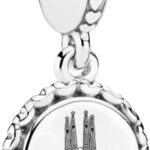 Sagrada Familia: The Epicenter of Barcelona's Charm
Sagrada Familia: The Epicenter of Barcelona's CharmIf you want to know other articles similar to Sagrada Familia: A Symbol of Barcelona's Vibrant Center you can visit the category Blog.
Deja una respuesta

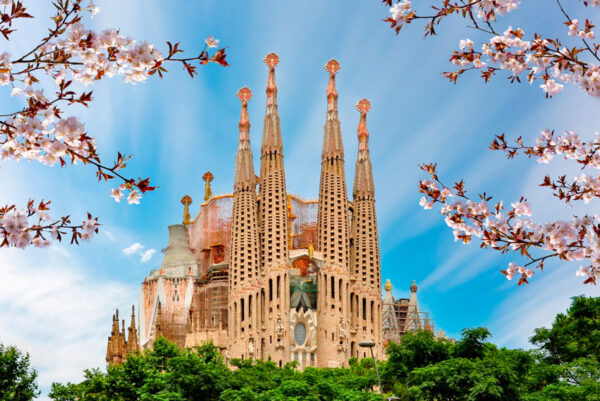
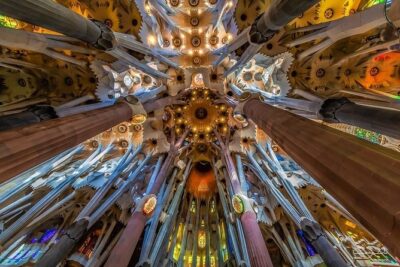
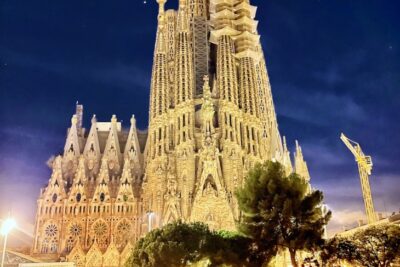
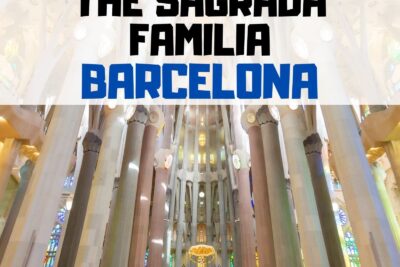
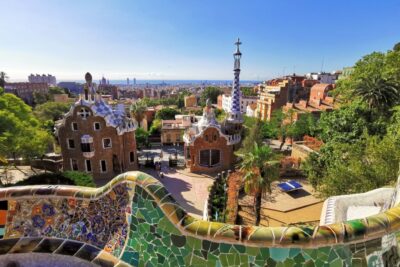
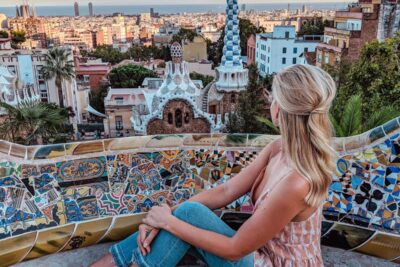

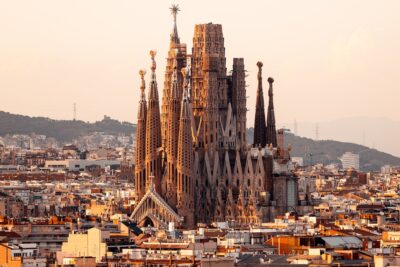
Read more!